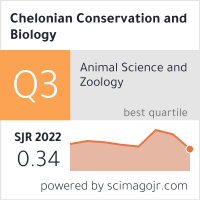TOXICOLOGICAL EFFECT OF HALOSULFURON-METHYL HERBICIDE WITH SPECIAL REFERENCE TO FRESHWATER FISH OF KARNATAKA, INDIA - A REVIEW.
Abstract
The agricultural sector is the world's largest herbicide user absorbing more than three billion kilograms per year. Herbicides are effective in limiting the proliferation to kill weeds, however, they have been associated with harmful human and environmental consequences. Agricultural fields account for approximately 87% of herbicide applications in India. Halosulfuron-methyl belongs to the Sulfonyl urea group and is represented chemically as C13H15N6O. IUPAC named as Methyl 3 – chloro – 5 - [ (4, 6 – dimethoxypyrimidin – 2 - yl) carbamoylsulfamoyl] – 1 – methyl-pyrazole – 4 – carboxylate. This herbicide is selective and systemic herbicide that controls post emergence of sedges and other weeds. It showed activity for the eradication of annual broad-leaved weeds and nutsedges. It has an excellent foliar application efficacy against weeds especially in Rice, sugarcane, maize and bottle gourd crops. Many investigations have shown that measurable amounts of Halosulfuron-methyl have a possible impact on fish and other aquatic organisms. It has ability to inhibit acetylcholinesterase (AChE) in exposed fishes indicates its neurotoxicity potential and causes tissue damage. High Halosulfuron-methyl concentrations linked to cell necrosis evidenced by histopathological aspects. The impact of Halosulfuron-methyl concentration on the survival of various fish species in Karnataka, India, requires rapid monitoring by all sector including Government. This review gives information about the research gap in effect of Halosulfuron-methyl herbicide study and helps in further research studies.
Downloads
Published
How to Cite
Issue
Section
License
Copyright (c) 2023 Chelonian Research Foundation

This work is licensed under a Creative Commons Attribution 4.0 International License.






